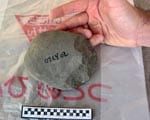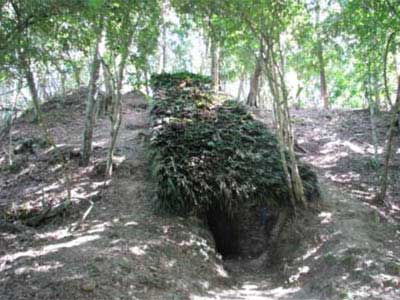From dinosaurs to sea turtles, and from technical assistance to advisory roles, SMU faculty and students, the SMU Shuler Museum, and the SMU Innovation Gymnasium have teamed with the nation’s new premier museum of nature and science in Dallas
Fossils on loan by SMU to the new Perot Museum of Nature and Science include those of animals from an ancient sea that once covered Dallas.
The fossils represent a slice of SMU’s scientific collaboration with the Perot Museum and its predecessor, the Dallas Museum of Natural History.
Items from SMU’s scientists include a 35-foot skeletal cast of the African dinosaur Malawisaurus standing sentry in the spacious glass lobby of the Perot, which opened Dec. 1 near downtown Dallas.
“The new museum building itself is an icon, but it’s also a statement by the city about taking the advances of science to the public,” said vertebrate paleontologist Louis L. Jacobs, an SMU Earth Sciences professor, who serves on the Perot Museum’s Advisory Board and Collections Committee.



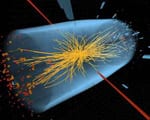
Jacobs, who was ad interim director of the Dallas Museum of Natural History in 1999, led the team that discovered Malawisaurus in Africa. He provided the cast to the museum.
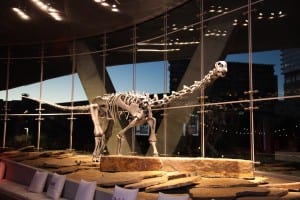
“Here at SMU we train students and create new knowledge. The museum’s mission is to take the stories of science out to the general public so they can be used,” said Jacobs. “Anthony Fiorillo, Perot Museum Curator of Earth Sciences, is a world-class scientist with whom we work. We have a junction between the mission, training and knowledge we have here, infused into and enhanced by what the museum does. That’s why the museum is important to SMU and that’s why SMU is important to the museum.”
Fossils on loan are from the collection of the Shuler Museum of Paleontology in the Roy M. Huffington Department of Earth Sciences. SMU scientists provided technical expertise for exhibits and serve on the Perot Museum’s advisory committees.
Also on exhibit from SMU is a miniature unmanned autonomous helicopter designed for fighting fires that was built by SMU engineering students.
Herbivorous dinosaur is exhibited with ancient Texas plant fossils
Shuler Museum fossils can be viewed in the T. Boone Pickens Life Then and Now Hall. They include an unnamed 113 million-year-old herbivorous dinosaur discovered in 1985 at Proctor Lake southwest of Stephenville, Texas.
For perspective on that exhibit’s paleoenvironment in Texas at the time, SMU paleobotanist Bonnie F. Jacobs provided fossil wood, fossil cones, fossil leaves and images of microscopic pollen grains from the Shuler Museum. The fossils provided information used to create a model of an extinct tree to accompany the exhibit.

Plant fossils inform scientists of the ecological setting in which dinosaurs lived and died, said Bonnie Jacobs, an SMU associate professor in the Huffington Department. Her collaboration with the Perot’s Fiorillo, who also is an adjunct research professor of paleoecology in the SMU Earth sciences department, includes fossil plants from Alaska.
“Understanding past climate and climate change will help us understand what may happen in the future,” she said. Bonnie Jacobs is featured in a Perot Museum Career Inspirations video that is part of the permanent exhibit and also advised on the text of some exhibits.
“The world of the past is a test case for global climate models, which are computer driven,” she said. “If we can reconstruct climates of the ancient Earth accurately, then we can create better models of what may happen in the future.”
Understanding paleoclimate through fossil soils is the expertise of Neil Tabor, an SMU associate professor in the Earth Sciences Department whose Perot Museum video discusses ancient soils, environments and the biggest extinction event in Earth’s history.
Fossils date from period when D/FW was covered by ancient sea
The plant fossils are from the geologic period called the Cretaceous, from 146 million years ago to 66 million years ago. They were discovered at the prolific Jones Ranch fossil beds southwest of Fort Worth in Hood County.
At that time, the Jones Ranch — famous as the discovery site of Paluxysaurus jonesi, the state dinosaur of Texas — was not far inland from the muddy coastal shore of a vast shallow sea that a dozen years later would divide North America.

Other SMU fossils on loan also date from that period. They include sea turtles, as well as mosasaurs, which were ancient sea lizards that evolved flippers and streamlined bodies for life in the sea.
Stunning examples of fossil sea turtles were discovered in 2006 by a 5 year-old girl, Preston Smith, during a family outing along the North Sulphur River near Ladonia in northeast Texas. The turtles were stacked one on top of the other as if caught in sudden death 80 million years ago.
Diana Vineyard, director of administration and research associate at SMU’s Institute for the Study of Earth and Man, identified the turtles as Toxochelys while an SMU graduate student.
Also on loan from the Shuler Museum, and also identified by Vineyard, are 110-million-year-old sea turtles from the Early Cretaceous of Texas, discovered near Granbury. They represent early specimens in the transition of turtles from land and shallow marine animals to fully developed sea turtles, Vineyard said.
Exhibit includes mosasaur named for the city of Dallas

Michael Polcyn, director of SMU’s Digital Earth Sciences Laboratory, put his expertise to work providing technical assistance for the museum’s Ocean Dallas marine reptile exhibit.
An expert in mosasaurs, Polcyn created digital reconstructions of Dallasaurus, named for the city of Dallas, and physically reconstructed the skeletons of Dallasaurus and another mosasaur, Tethysaurus, for the exhibit.
“The Ocean Dallas exhibit was a great opportunity to showcase the extraordinary story that the rocks in the Dallas area tell us about life in the deep past,” said Polcyn, whose mosasaur fieldwork extends from the United States to Angola.
“It was a great experience working with the museum’s creative and technical professionals on this project,” Polcyn said, “but it should be mentioned that many of the fossils in the exhibit were found by interested citizens walking the local creeks and rivers in search of these beasts, and it is they who deserve tremendous credit for bringing these finds to the public.”
Polcyn, who also is featured in a Perot Museum Career Inspirations video, created a skull reconstruction of the Perot Museum’s duck-billed dinosaur Protohadros, named by former SMU doctoral student Jason Head.
Other SMU fossils include dino footprint, croc egg and giant ammonite

SMU vertebrate paleontologist Dale A. Winkler, SMU research professor and director of the Shuler Museum, said other fossils on loan include:
- a rare 110 million-year-old crocodile egg discovered with specimens of the crocodile Pachycheilosuchus trinquei west of Glen Rose. Pachycheilosuchus trinquei was named by Jack Rogers, a former SMU student. Rogers also found and identified the egg.
- an ammonite, Parapuzosia, more than 3 feet in diameter and discovered in Dallas County.
In 2006, two SMU doctoral students assisted with excavation of the new species of dinosaur named for the museum’s namesakes, Margot and Ross Perot.
The dinosaur, Pachyrhinosaurus perotorum, was discovered by the Perot Museum’s Fiorillo and prepared by Perot Museum researcher Ronald Tykoski.

SMU doctoral student Christopher Strganac and former SMU doctoral student Thomas L. Adams helped dig Pachyrhinosaurus perotorum in Alaska. The only skeletal mount of its kind in the world, the 69 million-year-old skull is on display in the Life Then and Now Hall of the Perot Museum.
Also on view in the museum is a 3D cast of a dinosaur footprint that Adams and Strganac created from the laser scan of a 110 million-year-old fossilized dinosaur footprint, from ichnospecies Eubrontes glenrosensis, that was previously excavated and built into the wall of a bandstand at a Texas courthouse in the 1930s.
Another former SMU doctoral student highlighted among the exhibits is Yoshitsugu Kobayashi, who describes in a video the mentoring he received from the Perot’s Fiorillo while the two worked together in Alaska’s Denali National Park.
SMU’s Shuler Museum is named for Ellis W. Shuler, founder of the University’s geology department. Shuler was a driving force behind the precursor to the Perot Museum, the Dallas Museum of Natural History, established in 1936, said geologist James E. Brooks, SMU professor emeritus and SMU Provost emeritus. Brooks served on the Dallas Museum of Natural History’s board of directors from the 1980s until 2005.
Perot Museum presents a strong scientific face of Dallas
“Any first-rate city needs a strong public scientific face with which it’s identified,” Brooks said. “The Perot Museum is going to be that organization.”
Brooks was instrumental in the negotiations with Egypt that enabled the Dallas Museum of Natural History to bring Ramses the Great, its first major exhibit, to Dallas in 1989.
“Museums, in addition to educating children and the general public, also have the responsibility to generate new knowledge, because that makes the city a more intellectually vibrant place,” he said.
Brooks and Louis Jacobs serve on the Perot Museum’s Collections Committee, which serves in an advisory role to Perot Earth Sciences Curator Fiorillo. He and other SMU faculty and staff collaborate on field expeditions to Alaska and Mongolia.
SMU’s Innovation Gymasium contributes to Perot exhibit

SMU’s Innovation Gymnasium is featured in an exhibit in the Texas Instruments Engineering and Innovation Hall at the Perot Museum, said Nathan R. Huntoon, director of the Innovation Gymnasium at the SMU Bobby B. Lyle School of Engineering.
Central to the Engineering and Innovation Hall exhibit is an unmanned autonomous helicopter that can fight fires, built by SMU engineering students.
The Innovation Gym enables SMU students to hone their engineering and creative skills by working on real world, design challenges. Companies, researchers and non-profits all provide real challenges for the students to develop innovative solutions, often under intense time and financial pressure.
The firefighting helicopter featured in the new museum was the first such project.
Accompanying the helicopter is a video demonstration of the helicopter fighting simulated fires, as well as a touch-screen application with interviews of Huntoon and SMU students discussing engineering and innovation.
Huntoon has been a member of the Technology Committee and the Engineering and Innovation Committee for the Perot Museum.
James Quick, a professor of Earth sciences, as well as SMU’s associate vice president for research and dean of graduate studies, applauded the establishment of the Perot Museum, the result of decades of work by many people.
“Every great urban center should have an outstanding museum of nature and science to stimulate the imaginations of people of all ages and attract them to science,” Quick said. “The contribution the Perot Museum will make to North Texas cannot be overstated.” — Margaret Allen
Follow SMUResearch.com on Twitter.
For more information, www.smuresearch.com.
SMU is a nationally ranked private university in Dallas founded 100 years ago. Today, SMU enrolls nearly 11,000 students who benefit from the academic opportunities and international reach of seven degree-granting schools. For more information see www.smu.edu.
SMU has an uplink facility located on campus for live TV, radio, or online interviews. To speak with an SMU expert or book an SMU guest in the studio, call SMU News & Communications at 214-768-7650.



 Academic achievement improved among students active in structured after-school programs
Academic achievement improved among students active in structured after-school programs
 Ancient tree-ring records from southwest U.S. suggest today’s megafires are truly unusual
Ancient tree-ring records from southwest U.S. suggest today’s megafires are truly unusual Human diabetes has new research tool: Overfed fruit flies that develop insulin resistance
Human diabetes has new research tool: Overfed fruit flies that develop insulin resistance Middle school boys who are reluctant readers value reading more after using e-readers
Middle school boys who are reluctant readers value reading more after using e-readers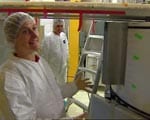

 CERN scientists find hints of Higgs boson — “God” particle
CERN scientists find hints of Higgs boson — “God” particle